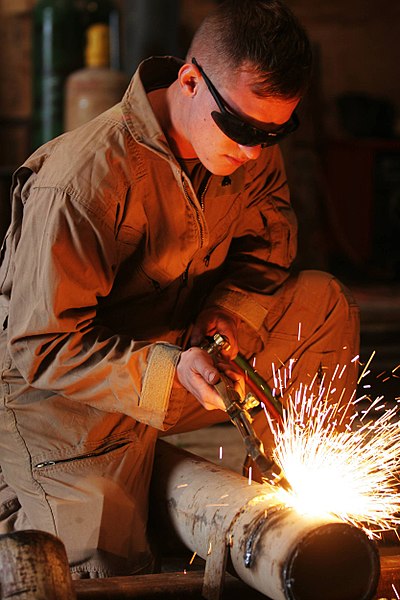The first flashlight consisted of a crude cardboard tube, light bulb, brass parabolic reflector and a battery. Because batteries were weak and bulbs primitive, flashlights of the era produced only a brief flash of light—hence the name.
But a portable hand torch, as the British call the light, was not what Joshua L. Cowen had in mind when he designed a safety fuse to ignite photographic flash powder: The precursor to the modern flash bulb. The new “flash-light,” was a financial failure as an aid to photographers.
It was too cumbersome to use.
However, the U.S. Navy bought the fuses to use with underwater explosives, and Cowen was able to recoup his initial investment.
Cowan next invented a decorative lighting fixture for potted plants. The invention consisted of a metal tube with a light bulb and a dry cell battery that could run the light for 30 days.
It flopped, as well.
In 1896, Cowan sold his company and patents to Conrad Hubert who early on became aware of the novelty item side of the electric industry and the tremendous profits to be gained. Hubert named his new company American Electrical Novelty & Manufacturing Company.
In 1897, Hubert recognized the potential of the flashlight and hired inventor David Misell, who had patented a portable electric lamp in 1895 and an early bicycle head lamp in 1896. Misell and Hubert assembled a number of tubular flashlights and gave them to New York City policemen in different precincts.
They began receiving favorable testimonials from the policemen.
In 1906, National Carbon Company, which supplied Hubert’s company with materials for their flashlights, bought a half interest in the company for $200,000. Hubert remained president but the name of the company was changed to “The American Ever Ready Company.”
Flashlight technology leaped forward around 1910 with the introduction of a nickel-plated tube and the invention of the tungsten filament bulb. Pocket-sized tungsten flashlights and search lanterns quickly became household items.
According to an Eveready brochure called “101 Uses for An Eveready,” the flashlight had become an essential personal item by 1916. “The light that does not flicker in a draught, extinguish in the wind, and is controlled instantly by finger pressure. It’s the light everyone needs,” the advertisement read.
The military found that the flashlight proved useful for reading maps in darkness and signaling with Morse code.
In search of a unique name for its flashlight, National Carbon Company held a contest in 1917. By contest’s end, more than 530,000 suggestions had been made. Four contestants received $3,000 each for their submissions of the acronym DAYLO.
DAYLO couldn’t be mispronounced, was easy to remember and suggested the use of flashlights. “Day” suggested perfect light and “lo” meant “behold” or “see.”
But the DAYLO name never caught on and was quietly discontinued after 1922.
Conrad Hubert became a multi-millionaire while Joshua Lionel Cowen finally achieved the success he really wanted. He invented toy trains in 1900 and started Lionel Model Trains.
Today, flashlights have evolved into the emergency tool of choice carried by policemen, utility workers, campers and fishermen alike.







